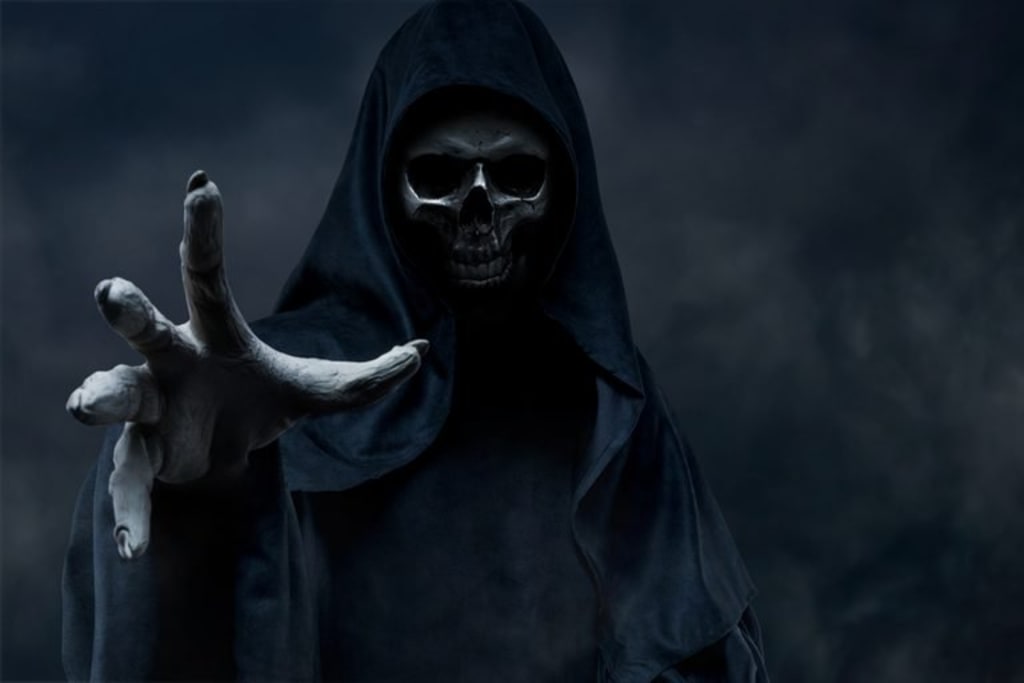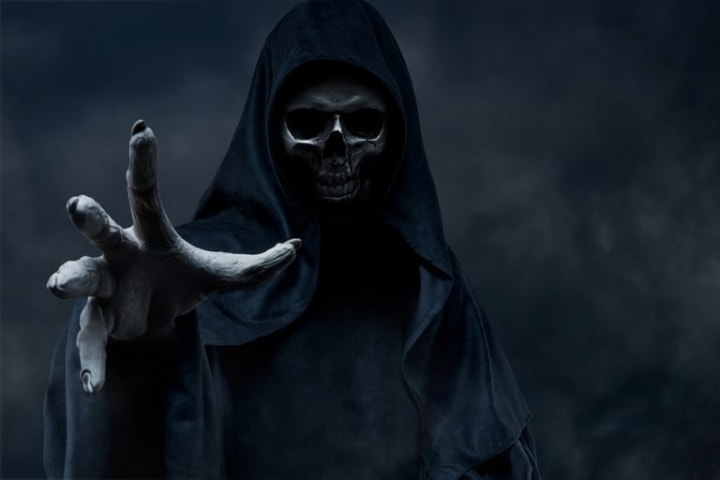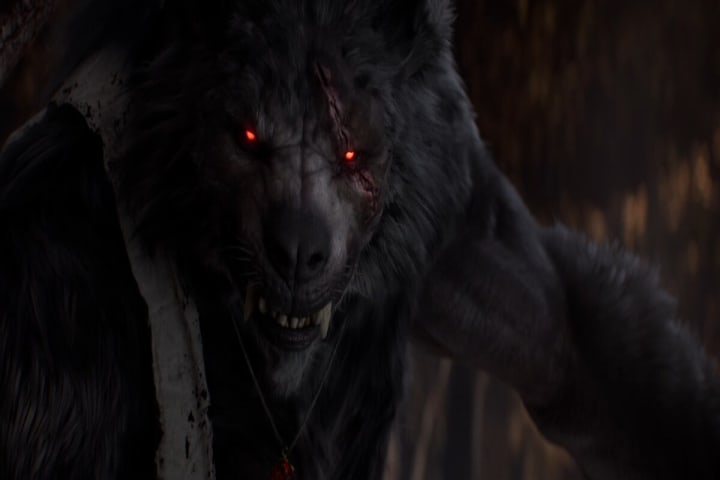
Halloween's scary creatures

The ideal Halloween night must include a full moon, an overcast sky, a cool breeze, and stories of the creatures we wish we wouldn't have to encounter. Who thought of the Halloween-themed monsters, ghouls, and witches? While you might think you already know the answer to "What is Halloween?", the real reason behind the hair-raising holiday and the blood-curling creatures isn't as easy.
Halloween monsters are human understandings of the unknowable and offer a way to express our most fundamental and basic fears. If you are a fan of horror stories and terrifying Halloween tales, we invite you to find out the true stories that inspired these monsters.
Explore the hidden history behind Halloween Monsters while we "dig out" the secrets of the supernatural creatures, from the mythology of the past to their contemporary incarnations.
Vampires

In the years prior to Edward Cullen and the Twilight vampires, Slavic folklore came up with the notion of dead people drinking the blood of living people to justify the spread of contagious diseases. If a person in the village died and another person became sick, the blame was put on the deceased for returning to cause harm.
Grim rituals were later applied to the body to prevent it from eating living creatures, and desecrations were later performed in the western part of Europe or even America to curb the myth of vampires.
However, Irish writer Bram Stoker and his popular 1897 novel Dracula, which was inspired by folklore and, supposedly, the cruel medieval ruler Vlad The Impaler, brought vampires back into the mainstream.
There is a myriad of movies or TV series, such as those from the series Dracula. In the Netflix show, Dracula continues to keep vampires that suck blood in our current world. To get even more scared, look up these Ouija board tales that took place.
Zombies

Although the zombies of today aren't particularly intelligent, which makes killing them relatively easily, a massive number of victims can overwhelm and devour the living. The story behind the Halloween monster, though not as horrific as it sounds, is equally terrifying. The story of slaves in Haiti, who drew inspiration from African religious beliefs, came up with the concept to represent the brutal conditions they were under.
The story was later in the voodoo faith of South America, the Caribbean, South America, and the Southern United States, and even had some roots. Bokors, a type of voodoo practitioner, were thought to use tetrodotoxin, a toxic neurotoxin that can cause temporary death-like paralysis from which the patient will awaken.
The zombie is a modern concept, beginning with the film Night of the Living Dead (1968), which is among the most frightening Halloween films that you can stream on Hulu and continuing today with The Walking Dead comic books and the TV show, making use of the zombie mythology to investigate the new dangers of contagion, nuclear warfare, post-apocalyptic and post-apocalyptic events as well as boredom in the suburbs.
The U.S. Centers for Disease Control and Prevention has also gotten involved by launching its "zombie preparation" website. Zombies are among the most terrifying costumes for Halloween. However, the style is an easy Halloween makeup technique anyone can master.
Mummies

In the past, Egyptians preserved their bodies and buried them with the things they needed to survive in secret graves that were hidden in the desert.
The notion of a curse attributed to mummies, that misfortune would strike those who open tombs, gained traction during the Egyptology trend, which began to take off around the turn of the century, after the Rosetta Stone's discovery that unlocked Egyptology and the early Egyptian language.
A 1912 article in The Washington Post even blamed the sinking of the Titanic on a curse attributed to a mummy. However, it was the finding of the untouched tomb that was King Tutankhamun's in 1922 that brought that "Curse of the Pharaoh" to life, particularly after the expedition's finance director, Lord Carnarvon, passed away from blood poisoning a few years after it was unveiled.
Hollywood took advantage of the mystery mummy fever in the film of 1932, The Mummy, starring Boris Karloff, arguably one of the greatest Halloween films ever made, and the story continues to be a classic about the dangers of human pride.
Ghosts

From misty, transparent ghosts floating around in the air, to invisible poltergeists hurling objects all over the place. The idea of ghosts is as diverse as it is ancient. It is based on the notion that souls have separate lives from their bodies, which means they live on after death, sometimes hanging around to haunt those who live. Sightings of ghosts have been documented since the beginning of Roman times.
According to surveys conducted in the present, more than half of Americans believe in ghosts, with the majority of people believing they've witnessed one. Although there are many photos of supposed ghosts, scary Ouija board tales, and the growing popularity of contemporary ghost-hunting programs and tours, nobody has yet been able to establish their existence.
Werewolves

The frightened, tortured werewolf does not want to transform into a beast, because it is clear the havoc that he'll cause, but there is no way to stop the transformation. Shapeshifters are as ancient as mythology itself. They are featured in tales from different cultures, ranging from the old Greek story of Lycaon, who was transformed into an animal by Zeus, as well as Nordic folklore.
In more recent times, Native Americans wore animal skins when hunting, and perhaps to scare off other tribes, which could be the reason for werewolf myths. Also, these Halloween creatures could have a scientific foundation, such as rabies, for instance, can make people take on wolf-like rampages. To take a light approach to things, think about these wolf puns, which are hilarious.
Witches

They have a prominent position in the world of the present. Because of Harry Potter, Bewitched, Charmed, Practical Magic, and other films about witches, they're generally viewed as smart and sweet. However, look a bit further back, and you'll see that the truth behind this popular Halloween costume has a dark past. As is mentioned in the Bible, the belief was that witches were the devil's pawns to hurt other people.
During the Middle Ages, the hysteria about witches increased with the possibility that up to 80,000 suspects were executed. The troubles began in America with the famed Salem witch trials that accused 200 witches of being involved in the practice and led to 20 deaths in 1692-1693. Today, people who follow Wicca as a modern version of the practice of witchcraft are regarded as harmless, even peaceful worshippers of nature.
The Grim Reaper

The eerie silhouette is death personified. The skeletal figure is encased in a black dress, carrying a tool for farming known as a scythe. This tool is used to "reap," or harvest the souls of human beings from the ground.
How did he get his name? Though there are many different cultures that have a creature such as gods, or some other physical entity that represents death and brings people to the beyond, this particular one was first introduced during the bubonic famine, known as the "Black Death," in Europe in the 14th century, during which millions died.
Artwork from this period starts by depicting Death, literally, as a skeleton. It is accompanied by the typical instrument of a scythe collecting souls. The enigmatic, dark black robe is reminiscent of funerary and religious attire.
From the ages to current times Reaper-like characters have appeared in everything all the way from Charles Dickens's "A Christmas Carol" to Bill and Ted's Excellent Adventure to Harry Potter. The Grim Reaper is also featured among the top scary Halloween decorations for your yard.
The horseman with no head

The Headless Horseman appears to be an actual tale of folklore, but it was in fact the work of the author's head. In the 1820s, The Legend of Sleepy Hollow, Washington Irving came up with the story of a schoolteacher, Ichabod Crane, who ran into the mysterious figure and was never heard from again. In order to give the story authenticity, Irving wrote the story as if it were found among the documents of a (fictional) historical figure.
Irving was likely inspired by the German mythology of headless riders (they are also mentioned in Irish mythology and Scandinavian mythology), as well as one historical story that mentions the story of a Hessian mercenary who was killed by a cannonball during the American Revolution.
While the town of Sleepy Hollow was originally fictitious, Irving chose to base his story on the real-life town of Tarrytown in New York. It was changed to Sleepy Hollow, adding legitimacy to the tale. It's not surprising that the creepy city of Sleepy Hollow is one of the locations in America believed to have been cursed.
Frankenstein's monster

Frankenstein's monster, commonly known as Frankenstein, was created by a writer named Mary Shelley, who is supposed to have been inspired to write her now-classic novel while on vacation in 1816 by a ghost-storytelling challenge.
As was the original intent of the book, mad scientist Victor Frankenstein and his jumbled-of-human-body-parts creature now stand for the fine line between what science can do--and what it shouldn't. Frankenstein's castle, located in Germany, could be the source of Shelley's story is among the most disturbing (or haunted?) abandoned castles all over the world.
Swamp monster

Swamps are a scary place. It's hard to tell what's lurking in the swamps or if anyone who's been in a pond with murky water is familiar with the terrifying sensation of something hitting your leg. Contemporary versions of these creatures are DC Comics' Swamp Thing and Marvel's Man-Thing, but the original version is believed to come from Cajun folklore.
Within the Louisiana bayou, the rougarou is a creature resembling a werewolf that was used to intimidate children into acting in a certain way. Recent tales concerning the Honey Island Swamp Monster also claim that there's a half-man, half-beast living in the swamps north of New Orleans, with an apparent footprint and video evidence to prove it.
Tales of water-dwelling Halloween-themed monsters could be inspired by the horror film from 1954, Creature From The Black Lagoon, said to be influenced by a South American legend.
Also read: Top 5 Real-Life Origins of legendary monsters.
Also read: Vampire Legends from the History.





Comments
There are no comments for this story
Be the first to respond and start the conversation.